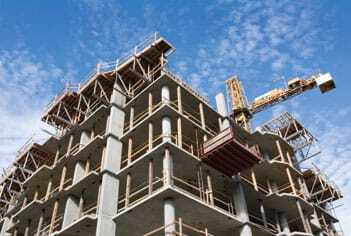Commercial mortgage–backed securities (CMBS) and conduit lending are two of the most significant innovations in the history of U.S. real estate finance, facilitating the flow of institutional investor capital into the funding of commercial real estate mortgages. Investment banks create CMBS by repackaging debt backed by commercial properties as bonds with different levels of risk. The level of risk determines the price bond buyers will pay for the various classes of bonds. According to Deutsche Bank, since 1993 there has been more than $1.257 trillion in conduit loans funded in the United States.
Since June, the CMBS and conduit industries have been hit hard by a variety of market forces that have made a reevaluation of their business model necessary. In order to understand the changes taking place, one must first look at the three phases of the life cycle of the CMBS and conduit industries since their inception—starting with what is known in the securitization industry as CMBS 1.0, from the industry’s birth in 1993 up to 2007, the year the music stopped; then CMBS 2.0, starting in November 2009 when the securitization and conduit industry had its first rebirth; and then CMBS 2.5+, or CMBS 3.0, starting this past August when CMBS and conduit market participants adapted to dynamic adverse changes in market conditions.
During the 14-year period from 1993 to 2007 known as CMBS 1.0, the industry originated $1.197 trillion of conduit loans and CMBS bonds, originating $243 billion at its peak during 2007. The industry grew dramatically during CMBS 1.0—a period that coincided with one of the greatest real estate bull markets in history and was characterized by relatively low fixed-income yields that made the yields from CMBS extremely attractive to bond buyers. The end of CMBS 1.0 coincided with the crash of the commercial real estate market in the latter half of 2007. Compared with the activity it had previously seen, the CMBS conduit lending market all but ceased to exist as 2008 loan originations and CMBS issuance dropped precipitously to $15 billion. In 2009, CMBS 2.0 was born.
Although the total volume of CMBS originated in 2009 was only $2.74 billion, the advent of CMBS 2.0 marked the reemergence of conduits and CMBS, albeit on a much smaller scale. What was apparent to Wall Street was that to increase the volume of business, it needed to augment the base of bond buyers. To do that, it needed to convince CMBS investors that the risks that existed under CMBS 1.0 were now being mitigated through better underwriting and increased levels of credit enhancement. Wall Street made these changes and in 2010 raised its CMBS issuance volume to $11.6 billion.
Going into 2011, the industry had developed momentum and appeared to be headed for total issuance of $36 billion. To date, according to Jefferies, a global securities and investment banking firm, $25.8 billion of CMBS has been issued. In the first five months of this year, the ranks of conduit CMBS lenders increased from five to more than 20, as reported by Commercial Mortgage Alert. The level of competition for deals pushed loan originators to significantly relax their underwriting. Despite the erosion of underwriting standards, bond buyers continued to purchase CMBS at very advantageous prices from the investment banks.
| CMBS professionals and the lawyers who help them implement Wall Street’s innovations have consistently demonstrated their ability to retool the CMBS and conduit business to make it profitable. |
During the first six months of 2011, bond buyers bought CMBS because of their attractive yields. The party stopped abruptly in June, however, when a confluence of macro factors caused bond buyers to stop both bidding on certain classes of CMBS and asking for higher yields on other classes of bonds, adversely affected the profitability of many securitizations. The Greek debt crisis, its potential impact on Europe, the downgrading of the U.S. credit rating, the U.S. debt-ceiling negotiations, and concern about a sputtering U.S. economy frightened institutional CMBS buyers, leading them either to retire to the sidelines or demand higher and higher yields as their perception of systemic and political risk increased. This volatility and uncertainty in the market made it increasingly difficult to price CMBS as well as newly originated loans, leading the conduit loan origination machine to slow down to almost a complete stop in July.
In the same month, in the midst of this calamitous market, an event took place that sent shockwaves through the CMBS market. At the end of July, Standard & Poor’s announced that it would have to withdraw its credit ratings for a $1.5 billion offering by Goldman Sachs and Citibank after the deal had been rated. This action was unprecedented and introduced a new level of risk into the market, further eroding investor confidence. As a result, Goldman and Citibank elected to pull the deal from the market. During July, the conduit and CMBS markets held their breath as to what would happen with bond investor yield demands, potential and unrealized hedging losses, and the necessity of the conduits to increase loan pricing to borrowers after the fact to avoid having to taking further losses by creating unprofitable loans.
This past August saw the second rebirth of the CMBS and conduit industries. In response to market conditions, Deutsche Bank devised a new approach to structuring its deals, and so CMBS 3.0 (Deutsche Bank’s name), or CMBS 2.5+ (Deutsche Bank’s competitors’ name), was born.
CMBS 3.0 introduced a number of innovative elements. The first was the introduction of a “super-senior” class of bonds with subordination levels of 30 percent compared with the prevailing 20 percent level for most senior bonds. The second innovation was the issuance of “public” bonds as part of the overall securitization. Previously, original-issue CMBS had been sold by investment banks on a private placement basis only. Public bonds, however, require a rigorous registration process with the U.S. Securities and Exchange Commission. With public bonds, there is more in the way of disclosure and ultimately transparency than with private bonds. The introduction of public bonds expanded the potential universe of CMBS bond buyers to include those investors who can invest only in public securities. The super-senior structure has since become a part of the industry’s securitization template, though some investment banks are still using a 20 percent subordination level.
| Since 1983, a community of original-issue CMBS bond buyers has developed and supported the sale of $1.257 trillion of commercial mortgage-backed securities. |
What lies ahead for CMBS 3.0 and beyond? Over the next five years, according to Jefferies, approximately $325 billion of CMBS loans will mature and need to be refinanced. A significant portion of this expiring debt is secured by assets and involves borrowers who will not have access to life company or bank financing due to asset quality, borrower issues, or the borrower’s preference for higher-leverage and nonrecourse loans. As a result, there should be no shortage of refinancing opportunities for CMBS conduit lenders.
The field of CMBS conduits has begun to shrink as a result of the ongoing market dislocation. Who will the survivors be? At the top of the list will be those CMBS originators who have their own balance sheets for funding and warehousing loans as well as their own in-house securitization apparatus. If the high level of market volatility continues, the ability to effectively hedge risk will be critical to a conduit. Wall Street investment banks have all these capabilities. Independent loan originators who aggregate loans—particularly if they are thinly capitalized or not partnered with another deep-pocketed partner—may be at risk, however. There are more than enough interested, well-capitalized, and well-qualified conduit and CMBS players to sustain the market.
Since 1983, a community of original-issue CMBS bond buyers has developed and supported the sale of $1.257 trillion of commercial mortgage–backed securities. What started out as a purely domestic industry with U.S.-based bond buyers quickly became global. The pool of existing and potential CMBS investors is broad and deep enough to support the continuation and growth of the CMBS market in the years to come.
The CMBS market has been through two recent rebirths and several other near-death experiences since 1983. CMBS professionals and the lawyers who help them implement Wall Street’s innovations have consistently demonstrated their ability to retool the CMBS and conduit business to make it relevant, functional, and uniquely profitable for conduit and CMBS sponsors. The industry today is continuing a sometimes-bumpy, 27-year-long process of evolution, growth, and development. These are challenging times for CMBS conduit lenders. But if the past serves as any indication of the future, this industry will reinvent itself again (and again) and live to lend another day.






